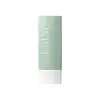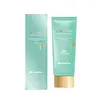What's inside
What's inside
 Key Ingredients
Key Ingredients

 Benefits
Benefits

 Concerns
Concerns

 Ingredients Side-by-side
Ingredients Side-by-side

Water
Skin ConditioningPropanediol
SolventDibutyl Adipate
EmollientBis-Ethylhexyloxyphenol Methoxyphenyl Triazine
Skin ConditioningButylene Glycol
HumectantDiethylamino Hydroxybenzoyl Hexyl Benzoate
UV FilterCI 77891
Cosmetic ColorantButyloctyl Salicylate
Skin ConditioningPanthenol
Skin ConditioningPhenethyl Benzoate
EmollientIsononyl Isononanoate
EmollientPentylene Glycol
Skin Conditioning1,2-Hexanediol
Skin ConditioningEthylhexyl Triazone
UV AbsorberPolyglyceryl-3 Methylglucose Distearate
EmulsifyingPolysilicone-15
UV FilterPotassium Cetyl Phosphate
EmulsifyingStearic Acid
CleansingPalmitic Acid
EmollientGlyceryl Stearate
EmollientHydroxyacetophenone
AntioxidantPoly C10-30 Alkyl Acrylate
Emulsion StabilisingC12-16 Alcohols
EmollientAluminum Hydroxide
EmollientCetearyl Alcohol
EmollientAcrylates/C10-30 Alkyl Acrylate Crosspolymer
Emulsion StabilisingPolyhydroxystearic Acid
EmulsifyingHydroxyethyl Acrylate/Sodium Acryloyldimethyl Taurate Copolymer
Emulsion StabilisingTromethamine
BufferingHydrogenated Lecithin
EmulsifyingVinyl Dimethicone/Methicone Silsesquioxane Crosspolymer
Polyglyceryl-2 Dipolyhydroxystearate
Skin ConditioningDipropylene Glycol
HumectantDisodium EDTA
Sodium Polyacrylate
AbsorbentSorbitan Isostearate
EmulsifyingBambusa Vulgaris Water
Skin ConditioningAllantoin
Skin ConditioningEctoin
Skin ConditioningCamellia Sinensis Leaf Extract
AntimicrobialMentha Rotundifolia Leaf Extract
TonicThymus Vulgaris Leaf Extract
Skin ProtectingHyaluronic Acid
HumectantEthylhexylglycerin
Skin ConditioningHydrolyzed Hyaluronic Acid
HumectantSodium Hyaluronate
HumectantWater, Propanediol, Dibutyl Adipate, Bis-Ethylhexyloxyphenol Methoxyphenyl Triazine, Butylene Glycol, Diethylamino Hydroxybenzoyl Hexyl Benzoate, CI 77891, Butyloctyl Salicylate, Panthenol, Phenethyl Benzoate, Isononyl Isononanoate, Pentylene Glycol, 1,2-Hexanediol, Ethylhexyl Triazone, Polyglyceryl-3 Methylglucose Distearate, Polysilicone-15, Potassium Cetyl Phosphate, Stearic Acid, Palmitic Acid, Glyceryl Stearate, Hydroxyacetophenone, Poly C10-30 Alkyl Acrylate, C12-16 Alcohols, Aluminum Hydroxide, Cetearyl Alcohol, Acrylates/C10-30 Alkyl Acrylate Crosspolymer, Polyhydroxystearic Acid, Hydroxyethyl Acrylate/Sodium Acryloyldimethyl Taurate Copolymer, Tromethamine, Hydrogenated Lecithin, Vinyl Dimethicone/Methicone Silsesquioxane Crosspolymer, Polyglyceryl-2 Dipolyhydroxystearate, Dipropylene Glycol, Disodium EDTA, Sodium Polyacrylate, Sorbitan Isostearate, Bambusa Vulgaris Water, Allantoin, Ectoin, Camellia Sinensis Leaf Extract, Mentha Rotundifolia Leaf Extract, Thymus Vulgaris Leaf Extract, Hyaluronic Acid, Ethylhexylglycerin, Hydrolyzed Hyaluronic Acid, Sodium Hyaluronate
Cyclopentasiloxane
EmollientWater
Skin ConditioningEthylhexyl Methoxycinnamate
UV AbsorberMethyl Methacrylate Crosspolymer
Butylene Glycol
HumectantEthylhexyl Salicylate
UV AbsorberPolymethylsilsesquioxane
Zinc Oxide
Cosmetic ColorantLauryl PEG/PPG-18/18 Methicone
Skin ConditioningCI 77891
Cosmetic ColorantC12-15 Alkyl Benzoate
AntimicrobialDimethicone/Vinyl Dimethicone Crosspolymer
Skin ConditioningDisteardimonium Hectorite
StabilisingCetyl PEG/PPG-10/1 Dimethicone
EmulsifyingC30-45 Alkyl Cetearyl Dimethicone Crosspolymer
EmollientMagnesium Sulfate
Vinyl Dimethicone/Methicone Silsesquioxane Crosspolymer
Isoamyl P-Methoxycinnamate
UV AbsorberGlucose
HumectantChlorella Vulgaris Extract
Skin ConditioningAluminum Hydroxide
EmollientParfum
MaskingStearic Acid
CleansingGlyceryl Caprylate
EmollientCaprylyl Glycol
EmollientFructose
HumectantFructooligosaccharides
HumectantDimethicone
EmollientSilica Dimethyl Silylate
Emollient1,2-Hexanediol
Skin ConditioningEthylhexylglycerin
Skin ConditioningGlycerin
HumectantLavandula Angustifolia Flower Water
Skin ConditioningBorago Officinalis Extract
EmollientCentaurea Cyanus Flower Extract
AstringentChamomilla Recutita Flower/Leaf Extract
AntimicrobialSalvia Sclarea Extract
AntiseborrhoeicPropanediol
SolventHyacinthus Orientalis Extract
Skin ConditioningCamellia Sinensis Leaf Extract
AntimicrobialSodium Hyaluronate Crosspolymer
HumectantHydrolyzed Glycosaminoglycans
HumectantCentella Asiatica Extract
CleansingBambusa Arundinacea Stem Extract
Skin ConditioningSodium Hyaluronate
HumectantCitric Acid
BufferingAloe Barbadensis Leaf Extract
EmollientCucumis Sativus Fruit Extract
EmollientBenzyl Glycol
SolventSodium Benzoate
MaskingHydrolyzed Hyaluronic Acid
HumectantPotassium Sorbate
PreservativeHyaluronic Acid
HumectantCyclopentasiloxane, Water, Ethylhexyl Methoxycinnamate, Methyl Methacrylate Crosspolymer, Butylene Glycol, Ethylhexyl Salicylate, Polymethylsilsesquioxane, Zinc Oxide, Lauryl PEG/PPG-18/18 Methicone, CI 77891, C12-15 Alkyl Benzoate, Dimethicone/Vinyl Dimethicone Crosspolymer, Disteardimonium Hectorite, Cetyl PEG/PPG-10/1 Dimethicone, C30-45 Alkyl Cetearyl Dimethicone Crosspolymer, Magnesium Sulfate, Vinyl Dimethicone/Methicone Silsesquioxane Crosspolymer, Isoamyl P-Methoxycinnamate, Glucose, Chlorella Vulgaris Extract, Aluminum Hydroxide, Parfum, Stearic Acid, Glyceryl Caprylate, Caprylyl Glycol, Fructose, Fructooligosaccharides, Dimethicone, Silica Dimethyl Silylate, 1,2-Hexanediol, Ethylhexylglycerin, Glycerin, Lavandula Angustifolia Flower Water, Borago Officinalis Extract, Centaurea Cyanus Flower Extract, Chamomilla Recutita Flower/Leaf Extract, Salvia Sclarea Extract, Propanediol, Hyacinthus Orientalis Extract, Camellia Sinensis Leaf Extract, Sodium Hyaluronate Crosspolymer, Hydrolyzed Glycosaminoglycans, Centella Asiatica Extract, Bambusa Arundinacea Stem Extract, Sodium Hyaluronate, Citric Acid, Aloe Barbadensis Leaf Extract, Cucumis Sativus Fruit Extract, Benzyl Glycol, Sodium Benzoate, Hydrolyzed Hyaluronic Acid, Potassium Sorbate, Hyaluronic Acid
Ingredients Explained
These ingredients are found in both products.
Ingredients higher up in an ingredient list are typically present in a larger amount.
1,2-Hexanediol is a synthetic liquid and another multi-functional powerhouse.
It is a:
- Humectant, drawing moisture into the skin
- Emollient, helping to soften skin
- Solvent, dispersing and stabilizing formulas
- Preservative booster, enhancing the antimicrobial activity of other preservatives
Aluminum Hydroxide is a form of aluminum. It can be naturally found in nature as the mineral gibbsite. In cosmetics, Aluminum Hydroxide is used as a colorant, pH adjuster, and absorbent.
As a colorant, Aluminum Hydroxide may add opacity, or reduce the transparency. Aluminum hydroxide is contains both basic and acidic properties.
According to manufacturers, this ingredient is an emollient and humectant. This means it helps hydrate the skin.
In medicine, this ingredient is used to help relieve heartburn and help heal ulcers.
There is currently no credible scientific evidence linking aluminum hydroxide in cosmetics to increased cancer risk.
Major health organizations allow the use of aluminum hydroxide in personal care products and have not flagged it as a carcinogenic risk at typical usage levels.
Learn more about Aluminum HydroxideButylene Glycol (or BG) is used within cosmetic products for a few different reasons:
Overall, Butylene Glycol is a safe and well-rounded ingredient that works well with other ingredients.
Though this ingredient works well with most skin types, some people with sensitive skin may experience a reaction such as allergic rashes, closed comedones, or itchiness.
Learn more about Butylene GlycolCamellia Sinensis Leaf Extract is derived from the leaves of the tea plant. Black tea, green tea, and oolong tea are all harvested from this plant.
This ingredient has many skin benefits:
This ingredient contains polyphenols, a strong antioxidant. Antioxidants help fight off molecules that damage skin cells.
On top of that, the antioxidants in green tea neutralize free-radicals from the sun. This gives the skin some extra UV protection, but should not replace sunscreen.
Many components of tea have anti-inflammatory properties.
Polyphenols and L-theanine help soothe the skin and reduce irritation. The caffeine in Camellia Sinensis Leaf Extract helps calm inflamed blood vessels.
Other compounds found in tea include: Vitamin Bs, linoleic acid, magnesium, calcium, iron, and zinc.
Research has shown both drinking Camellia Sinensis Leaf Tea and applying it to the skin can help boost skin elasticity and hydration. Studies also show using tea extract may reduce sebum, or oil, production.
Learn more about Camellia Sinensis Leaf ExtractCi 77891 is a white pigment from Titanium dioxide. It is naturally found in minerals such as rutile and ilmenite.
It's main function is to add a white color to cosmetics. It can also be mixed with other colors to create different shades.
Ci 77891 is commonly found in sunscreens due to its ability to block UV rays.
Learn more about CI 77891Ethylhexylglycerin (we can't pronounce this either) is commonly used as a preservative and skin softener. It is derived from glyceryl.
You might see Ethylhexylglycerin often paired with other preservatives such as phenoxyethanol. Ethylhexylglycerin has been found to increase the effectiveness of these other preservatives.
Hyaluronic acid is naturally found in healthy skin. It is a humectant, meaning it draws moisture to your skin.
This ingredient helps hydrate, soothe, and protect the skin.
What makes hyaluronic acid so hydrating? It has the capacity to bind or hold large amounts of water.
Fun fact: It is already naturally found in our bodies, such as the fluids of our eyes and our joints.
Studies find this ingredient to have anti-inflammatory and anti-microbial properties. This can help speed up wound-healing.
Hyaluronic acid can be irritating if the molecule has a low-molecular weight, or if the molecules are small.
One study found low-molecular weight hyaluronic acid to be pro-inflammatory, meaning some people may experience irritation. This is because our bodies use hyaluronic acid in the wound-healing process to signal to our bodies, via irritation, that something needs healing.
The same study found high-molecular weight hyaluronic acid to be anti-inflammatory.
These are some other common types of Hyaluronic Acid:
Learn more about Hyaluronic AcidHydrolyzed Hyaluronic Acid is a form of hyaluronic acid. It is created by the hydrolysis of hyaluronic acid with a high molecular weight. Once created, Hydrolyzed Hyaluronic Acid has a low molecular weight.
Low molecular weight HA has been shown to hydrate and increase elasticity of the skin. Increasing elasticity is also associated with reduction of wrinkle depth.
One study found topical low molecular weight hyaluronic acid may be considered for the treatment of rosacea in the adult population. However, we always recommend speaking with a professional about your skin concerns.
Hyaluronic acids are a humectant. This means they draw moisture from the air. Hyaluronic acids help moisturize, soothe, and protect the skin.
Read more about other common forms of hyaluronic acid:
Learn more about Hydrolyzed Hyaluronic AcidPropanediol is an all-star ingredient. It softens, hydrates, and smooths the skin.
It’s often used to:
Propanediol is not likely to cause sensitivity and considered safe to use. It is derived from corn or petroleum with a clear color and no scent.
Learn more about PropanediolSodium Hyaluronate is hyaluronic acid's salt form. It is commonly derived from the sodium salt of hyaluronic acid.
Like hyaluronic acid, it is great at holding water and acts as a humectant. This makes it a great skin hydrating ingredient.
Sodium Hyaluronate is naturally occurring in our bodies and is mostly found in eye fluid and joints.
These are some other common types of Hyaluronic Acid:
Learn more about Sodium HyaluronateStearic Acid is a fatty acid. It is an emollient, emulsifier, and texture enhancer.
As an emollient, stearic acid helps soften skin. It aids the skin's protective barrier by preventing water loss. It also provides a gentle cleansing effect without stripping away natural oils.
Stearic acid may also be used to enhance the texture of products. It can add volume and stabilize ingredients such as water and oil. This can help water and oil ingredients from separating.
Sources of stearic acid include animal or vegetable fats/oils such as coconut or shea. It can be naturally found in butter, cocoa butter, shea butter, vegetable fats, and animal tallow.
This ingredient may not be Malassezia folliculitis, or fungal-acne safe.
Learn more about Stearic AcidThis ingredient is used in makeup and skincare to thicken formulas, reduce shine, and give skin a silky-smooth feel.
It’s a white silicone powder that sits in fine lines and pores to blur their appearance though its effectiveness depends on the particle size.
You'll typically find this ingredient in amounts between 0.1-20%.
Learn more about Vinyl Dimethicone/Methicone Silsesquioxane CrosspolymerWater. It's the most common cosmetic ingredient of all. You'll usually see it at the top of ingredient lists, meaning that it makes up the largest part of the product.
So why is it so popular? Water most often acts as a solvent - this means that it helps dissolve other ingredients into the formulation.
You'll also recognize water as that liquid we all need to stay alive. If you see this, drink a glass of water. Stay hydrated!
Learn more about Water